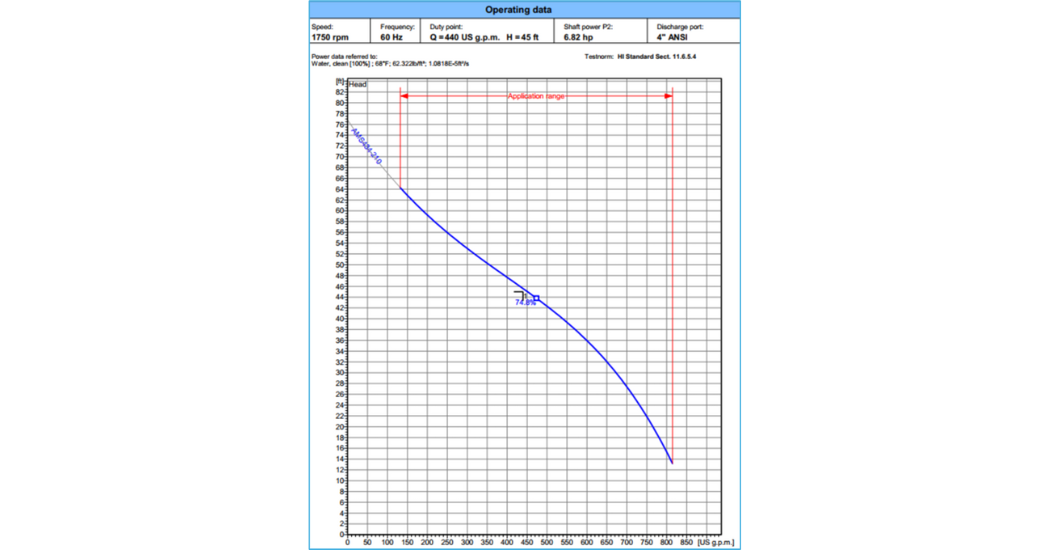If you have ever worked with pumps before, be it in an installation, maintenance, or engineering capacity, chances are high you have seen a pump curve. Chances are also high that the first time you saw a pump curve, you had no idea what it meant. That makes sense, because a pump curve is not intuitive at first glance and can be intimidating to someone who is not used to them. However, once you understand some of the basics of curves you will be able to not only understand what they show, but also use them to evaluate a pump’s operation. With this information, you can identify if a pump is meeting its required performance, whether the system is operating as designed, and even prevent pump failures by evaluating if they are operating in a region that may lead to excessive wear and tear. But before we can learn how to use a curve, we have to learn how to read one.
In order to talk about pump performance, we need to talk about Flow and Pressure. A pump operating will move a volume of water in a given time (Flow) at a pressure. There are several units of flow that are used, but the most common is gallons per minute (GPM). The most common way to talk about pressure, is what we call “Head.” When talking about the pressure a pump generates, you may hear this referred to as TDH, or Total Dynamic Head. The TDH is the vertical distance (given in Feet in the US) that the pump will push water up. This is very useful when talking about pumping water out of wells, because the depth of the well and the pressure of the pump can both be put in terms of feet. We can convert between psi and feet by multiplying the psi by 2.31. (i.e. 2.31*ft of H20 = psi)
